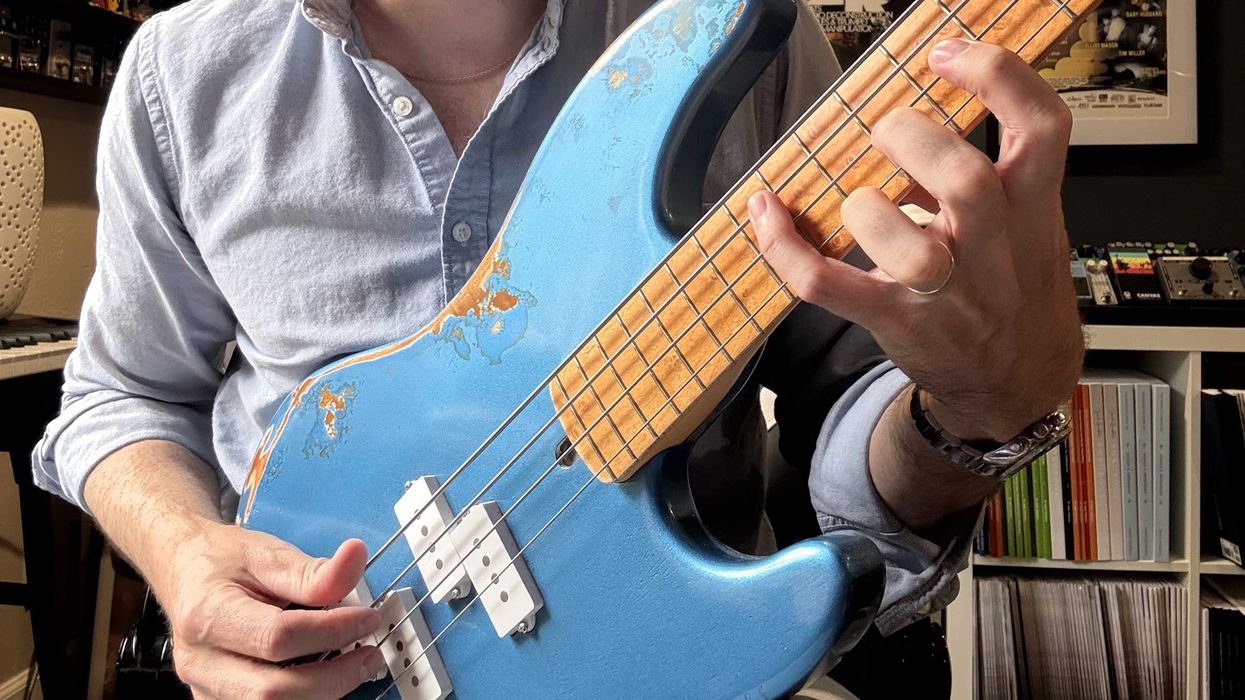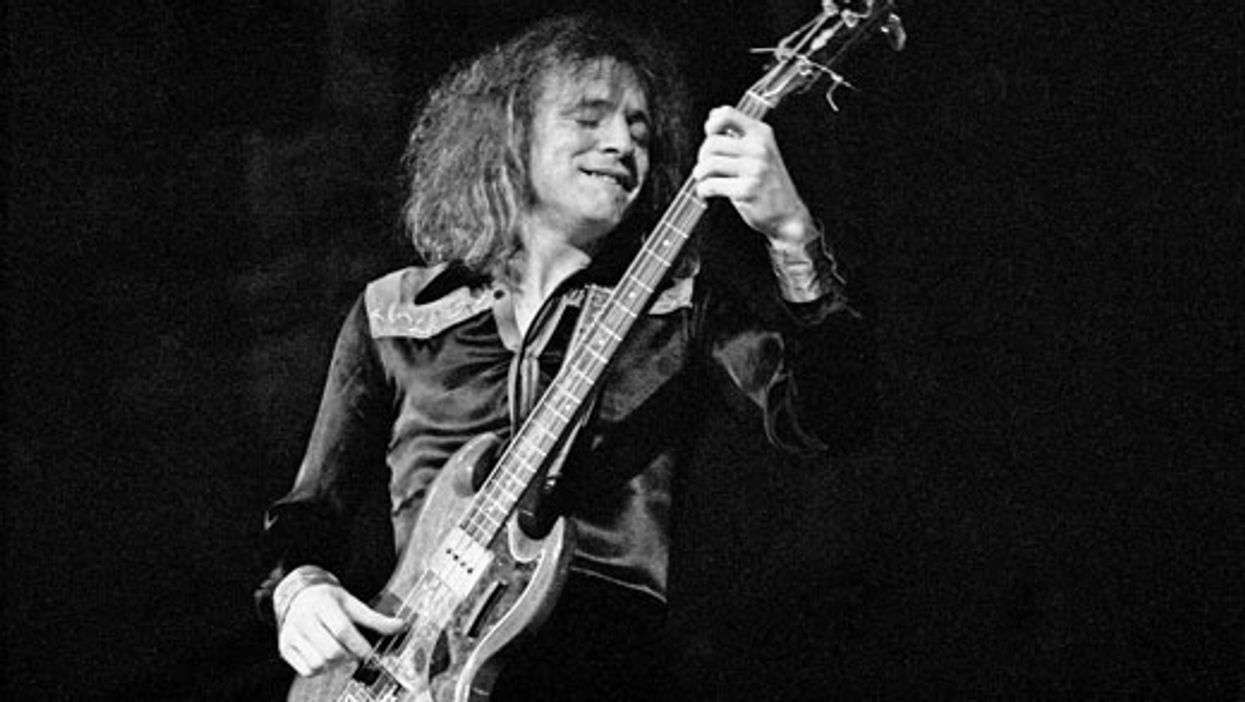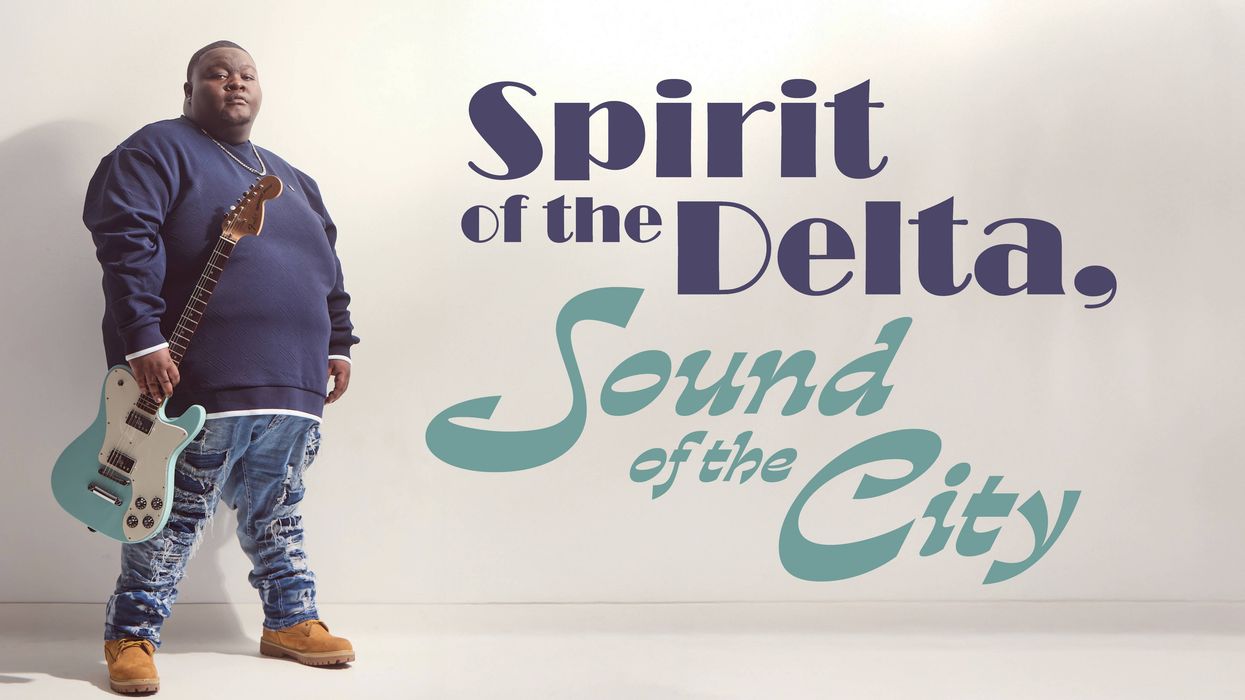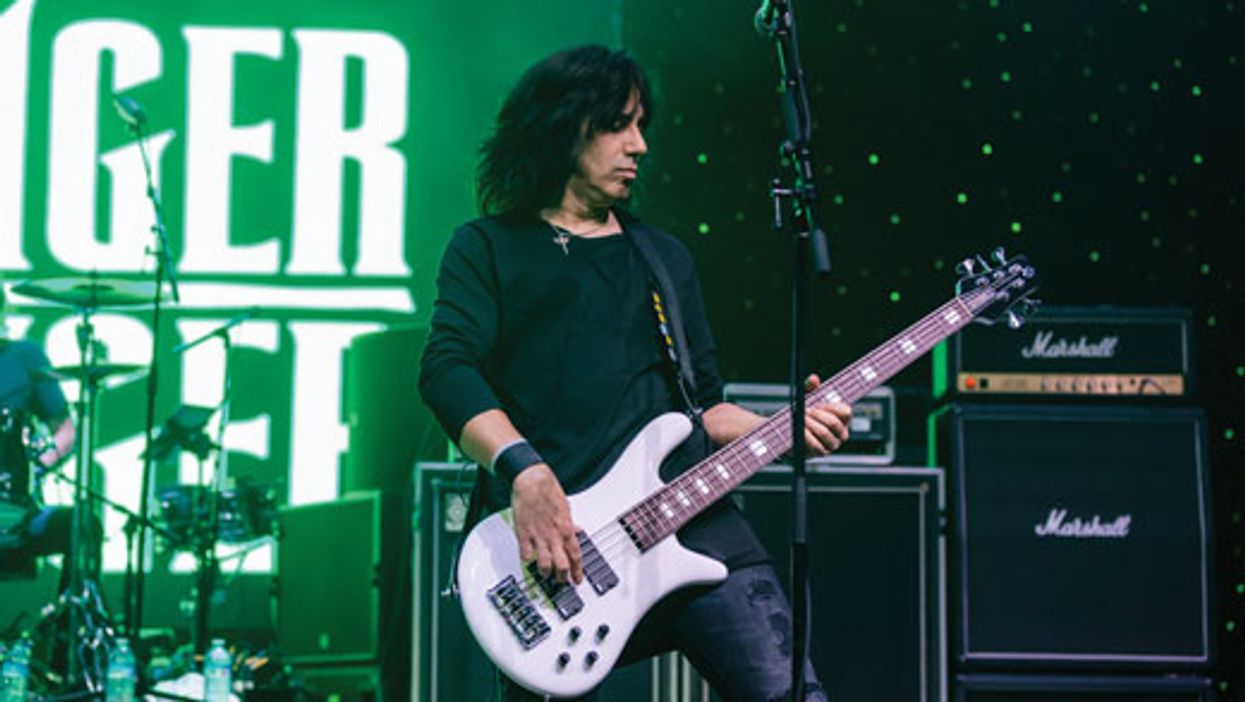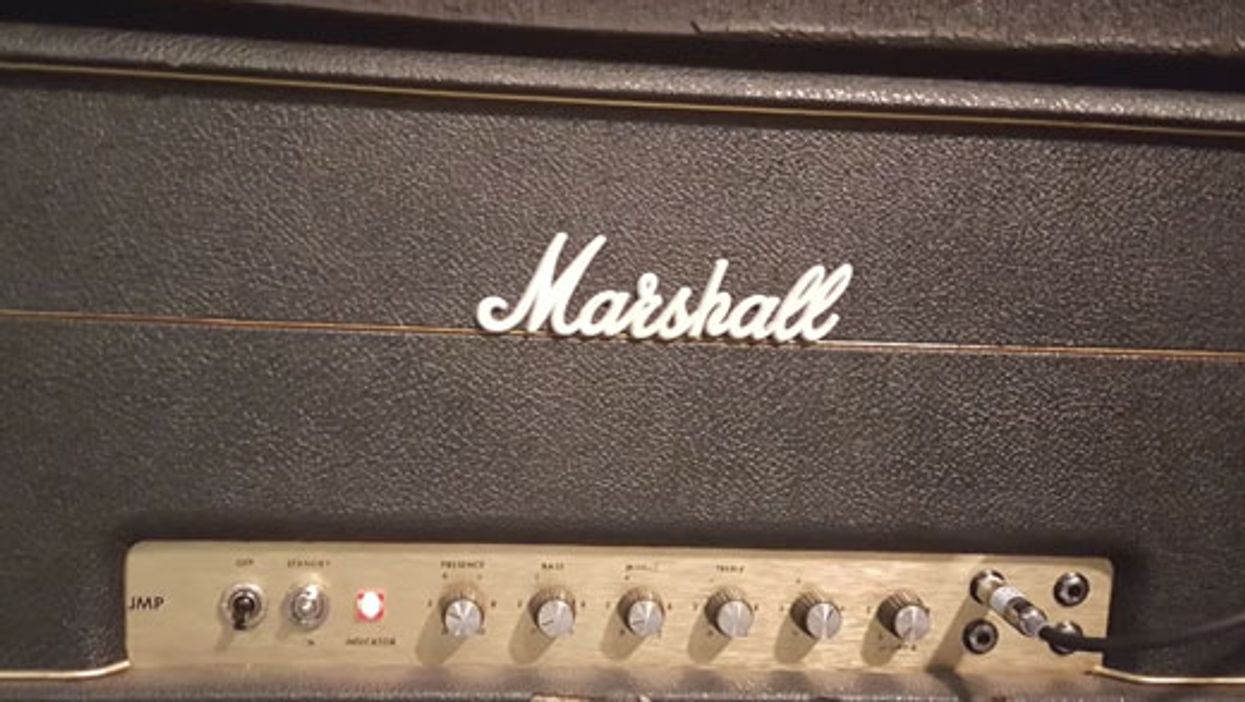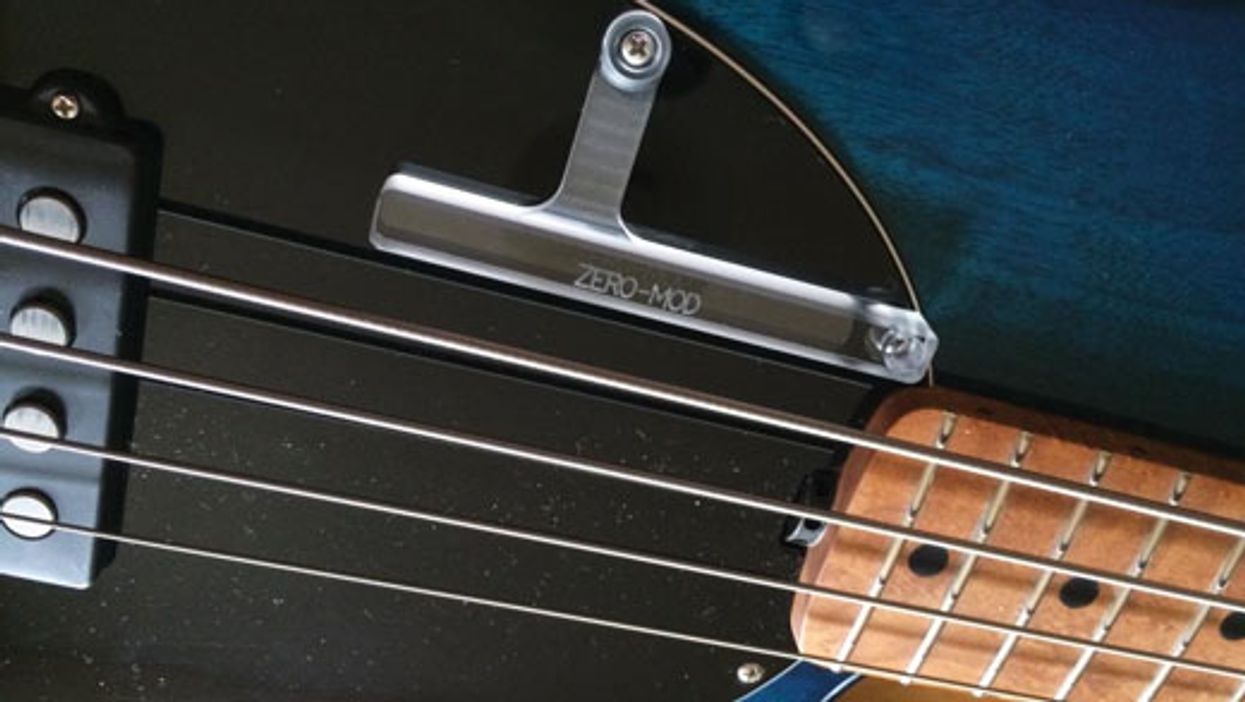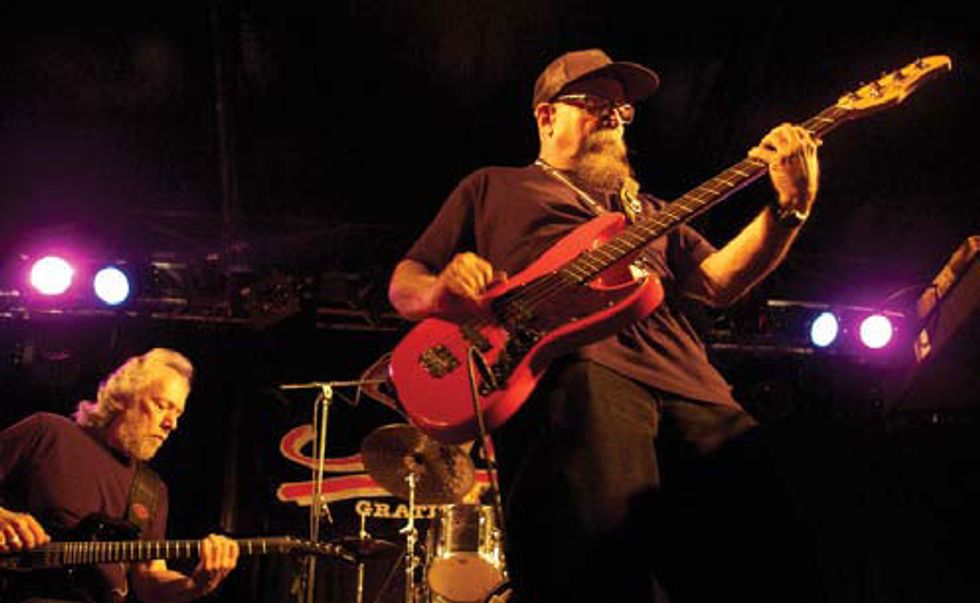 With Harvey Mandel on guitar, Larry Taylor holds down the low end as
Canned Heat rocks the Wespelaar Swing 2010 festival in Belgium.
Photo by Mark “Markec” Van Mullem
With Harvey Mandel on guitar, Larry Taylor holds down the low end as
Canned Heat rocks the Wespelaar Swing 2010 festival in Belgium.
Photo by Mark “Markec” Van MullemLast night while digging through my vinyl collection, I grabbed a John Mayall album, USA Union. Mayall is known for cutting bluesy jazzrock albums with such guitar slingers as Eric Clapton, Mick Taylor, and Peter Green, and more recently, Coco Montoya, Sonny Landreth, and Robben Ford. And for USA Union, Mayall gathered yet another fine lineup. On guitar was Harvey Mandel, best known for his work with Canned Heat, but also with bluesharpist Charlie Musselwhite, as well as a stint with the Stones. Bassist Larry Taylor—a Canned Heat alumnus nicknamed “The Mole”—held down the bass part. On electric violin (with wah pedal!) was Sugarcane Harris, known for the ’70s band, Pure Food and Drug Act, as well as his work with Frank Zappa. Mayall kicked in vocals, harmonica, and piano.
Listening to the album, I really dug how each of these four musicians added a little something to the flavors and textures of the tunes. Overall, the album had a groove and drive that locked in from the first track to the last. And then I realized, even with all this rhythmic synergy, these cats didn’t have a drummer! With an old-school, flatwound-and-foam-mute P-bass sound, Larry Taylor kept everything moving—never losing the groove or dropping a beat.
I frequently play without a drummer and often have to keep things moving on bass. I’ll never get to the level of Taylor’s work, but I try to follow some of the same concepts. At a recent blues-trio gig, a guitarist friend in the audience commented, “It’s the glue—the bass holds it all together.” I was flattered he noticed—that’s really how I see my job in the band.
But what makes this musical glue? For me, the three main elements are time, foundation, and movement. By time, I’m referring to the beat, the groove, and the feel—it’s the pulse that keeps the music moving along. This challenging role requires a lot of self-discipline. You can’t play too many notes or get engrossed in passages that sacrifice time for chops.
But that’s just the beginning: The bassist in a drummerless group can control the music’s feel by beat placement. Lean ahead on the beat and the music gains urgency. Sit back a bit on the beat’s edge and the feel gets much more laid-back. Playing square on the beat can do a good job of holding the tempo in place if your bandmates are getting either sleepy or overly excited.
Another key to time is the bassist’s ability to keep the tempo in place. If a bassist follows the others too closely, the beat may start to run away. On the other hand, trying to hold the time steady while the others remain wrapped up in what they’re doing makes the music sound draggy. This is where the role of communication comes in and making eye contact can be helpful while working to hold the beat in place. The others know what you’re up to and can try to get into sync.
The second part of a bassist’s musical glue comes from the bass’ role as the foundation. When a drummer friend once said, “That’s why they call it bass,” he was referring to note choice as well as tone. It’s not about turning an amp’s bass control up to 11, but instead, sensing where the notes need to lay. For my own playing, I usually choose notes in the lower regions of the neck. Sure, it’s easier to avoid getting lost on the neck if you don’t stray far from home, but a bassist who sticks with the “money notes” also stays out of the way of the other musicians in the trebly sonic regions.
You may have come across one of the lists out there that details fines for bassist offenses, both musical and personal. Among the offenses appearing on many versions of the list is playing above the 1st octave. The penalty, according to one particular list, is immediate dismissal. Perhaps a bit harsh, but it really drives the point home—venturing up into those stratospheric regions takes away from the foundational role of the bass. My band “charges” me $50 per octave-plus note instead.
Going along with this emphasis on foundation is the need to bring out the root notes of the chords. While a bassist doesn’t need to sit on the root endlessly, others in the group will find it helpful to clearly hear the chord foundations as they change.
Movement, as I refer to it here, is about showing how the music is going from one foundation to another. It’s the transition notes, making clear to the others where the chords are moving. A bassist needs a plan for getting from point A to point B musically. Movement can work with scale tones, chromatic tones, or chordal emphasis, and helps the other musicians hear the movement and stay on course.
This point about movement came through at a recent Real Book jam session. We were playing “All Blues” and one of the players commented on how the bass line made the whole thing work for him. Not only did the bass line signal the foundation by hitting the chord root on the changes, the chromatic movement ahead of the root hinted that the change was on its way. And of course, the repeated riff contributed to the sense of time.
Although the bassist is often at the back of the bandstand, a good bassist can stand out sonically, yet subtly, by laying down bass magic that holds the tunes together without grandstanding chops and ability. The triad of time, foundation, and movement may not be flashy—and it requires a lot of self-discipline—but it’s really the glue that makes the music work. So check out some of your favorite drumless music and listen for the three roles the bassist plays in musical success.
 Dan Berkowitz
is a professor by day and
a bassist when the sun
goes down. He plays
upright and electric bass
for blues, jazz, orchestra,
and musical theater.
Contact him at profdanb@gmail.com.
Dan Berkowitz
is a professor by day and
a bassist when the sun
goes down. He plays
upright and electric bass
for blues, jazz, orchestra,
and musical theater.
Contact him at profdanb@gmail.com.


